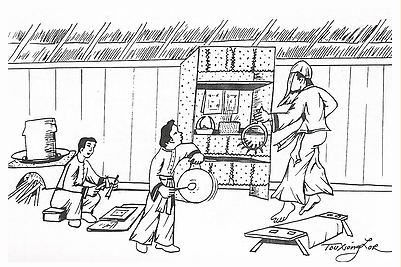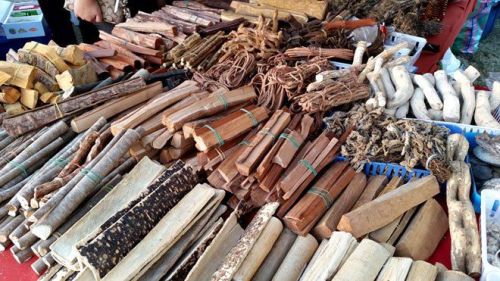Written by Padra Chang ‘20
Hmong Culture and Customs
Gender Roles:
Many traditional Hmong families still believe in the patriarchy system and it is reinforced onto future generations. A patriarchy system is where the male plays the dominant role and holds the most power in the family. The role is often given to the father or the eldest male. In a typical traditional Hmong family, the father’s role is to be able to maintain a shelter, provide food, be able to make money, and be involved in Hmong politics. The boys are supposed to learn the father’s role and be able to support the father in other responsibilities. On the other hand, females are often largely excluded from having power. A mother’s responsibility is to do household chores, look after children, and try to make money through her embroidery. Furthermore, girls are supposed to learn the responsibility of a mother/woman and also be able to help around the house. The patriarchy system is still relevant in certain traditional Hmong families. However, there has been some role shifts within the past years.
Religion:
Historically, the Hmong people first believed in Animism and a blend of Shamanism. Animism is the belief in supernatural powers and a spiritual essence that animates the material universe. Furthermore, every natural being has a spiritual existence in the world. These spiritual beings can be helpful or harmful to the human interest. On the other hand, Shamanism is the belief that a person is able to reach a certain consciousness and transcend to different realms. A shaman is the bridge between the spiritual realm and the material world. There are still Hmong communities that practice these customs but most of them are traditional Hmong families and Hmong elders.

Shaman performing the healing ritual
After the war, some Hmong families in Laos and Thailand decided to convert to Buddhism to blend in more with the local populations. Also, some Hmong people in America were very thankful to the churches that funded bringing them to the U.S. and they decided to convert to Christianity. In America today, there are more Hmong Christians than when the Hmong people first arrived in America. Furthermore, Christianity was able to stretch all the way to the Hmong people in Laos and Thailand as well.
Mannerisms:
Many Hmong families strongly emphasize the notion of respect. The system of respect is in the form of a hierarchy system, where the elders are the mostly highly respected in the family. In addition, Hmong people are very humble to elders and guests. Hmong people treat their elders and guests with respect because they believe everyone should feel welcome with care and attention. They also stress the idea of morality. Lastly, Hmong people prefer to do things as a collective group because they believe one cannot be successful without the other.
Ceremonies:
The Hmong New Year is celebrated to honor our ancestors for the completion of harvest. The celebration often takes three days to complete. In those three days, many Hmong families will take the time to honor their ancestors and wish for good health and fortune for the next year. After those rituals are completed, then comes a big festival with food, games, performances, feasting, and courting. This is the only time Hmong people are able to wear and display their traditional Hmong clothes.
Medicine:
Hmong families often use herbal medicines. In most traditional Hmong families, they believe that when a person becomes sick it is because their spirit must be lost somewhere. To retrieve their spirits they ask for help from a shaman practitioner (txiv neeb). The shaman will need certain materials and do certain steps to retrieve the lost spirits of the patient. The process is very complex and would often need elders to be there to interpret their sayings and assist the practitioner.

Reference: Hmong People History Culture Beliefs
Leave a comment